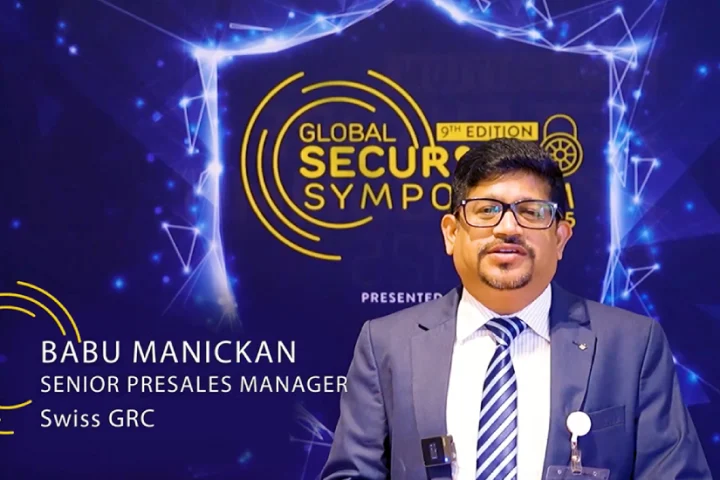With the rise in the adoption of cloud and as-a-service model, the MEA region is witnessing a change in the way system integrators are approaching the market. Their focus is to build service capabilities and in turn, forge a long term relationship with the customers.
Q. In the current scenario where the role of channel partners / system integrators are changing, how are you evolving with the time?
At the end of the day, we are an IT services company. Hence, the value and evolution is to put more emphasis on our ability and capacity as the service provider. If you look at from our financials or PNL point of view, we are trying to balance the composition of services that we have rather than just focusing on reselling business. Product reselling is easy as well as aggressive with competition very high and you have to squeeze your margins to remain in the game. The only differential value that you have is your own services. This is how you develop the trusted advisor relationship with the customers.
The factors like predictability in terms of delivery, ability to execute, expertise in technology, and services capabilities are actually helping us to compete and position ourselves strongly in the marketplace. With service provider concept coming into our traditional space and making it more professional services, we are developing capabilities to be more service provider oriented, and developing service level agreement and long term relationship with the customers. This is the only way that a company in systems integration space can sustain and grow.
Q. Why is this realization of looking at services as serious stream of business this year itself and not in the past years?
It’s a trend that we have been definitely investing on and building our services capabilities. The main difference now is that customers are starting to buy the ‘as-a-service’ model more and more. However, I don’t see this approach being active in MEA region yet but we know that it would certainly come this way. The vision in this part of the world is still not that aggressive and they are still a lot of traditional projects happening.
Also, most of the market here are either government or government-owned be it telecommunications, transportation, energy, etc. And it is an open market for the service providers servicing these sectors. They are normally identified and part of these consortiums. Since the government has started to move more and more operations into those service providers, our approach has been to work rather than competing with them. The rest of the traditional service providers will certainly take time to grow.
Q. How much of your focus has been towards the cloud services and ‘as-a-service’ model?
Cloud is a concept that people have started to consume but the whole market is depending more on electronic solutions and applications. If you go back to the government or semi-government environment, it’s just a concept of how they are consuming their data centers. But at the end of the day, the same elements of the data center being consumed will be there; it will just be different from operations, services, provisioning, and billing point of views.
And this is what we do, as one of our main practices is building the data center that will have a flavor of either public cloud or private cloud. But this has to be decided by the customers. For example, we are doing a number of projects with the service providers like Etisalat, wherein they are providing data center services to their customers and at the end of the day, what we are providing is the same kind of traditional data center even though we are pulling up tools so that they are cloud-enabled. We are also building services that can be provided in these new ways of consuming IT i.e. ‘as-a-service’ model.
Furthermore, we are launching new services like End Point Management as-a-service, Testing-as-a-Service, wherein we are entering into a service-level agreement with the customer and keep the entire infrastructure required to deliver those services. This is the way we are seeing how the market is evolving.
Q. In the cloud domain, what all services are you providing to the customers?
As of today, in the cloud space, we are launching Testing-as-a-Service and End Point Management as-a-service. The other area of focus is implementing cloud services with our partners. We have a partnership with Microsoft, wherein we either provide a pure Microsoft cloud infrastructure whether it Office 365 or Azure, or combine those offerings within our own cloud offerings.
For example, in the End Point Management as-a-service, we offer different levels of end point management that can be from pure infrastructure or security point of view and that can be linked to Microsoft tools. So, we can combine these offerings either on our own premises or use the public cloud services that Microsoft is offering.
Q. At this point, have you set any roadmap or target for launching different services in terms of co-branding or white labeling?
Again, there will be several practices that we will continue following. Like for example, we are very much committed to the portfolio that Microsoft is putting together, ensuring that Office 365 and Azure platform-as-a-service is very much there in the marketplace. Besides, we are looking at some options in the field of Infrastructure-as-a-Service as well. And above all, we are building our own services portfolio that will be provided to all the customers, which will be combination of both third-party as well as our own services. This is the way we want to evolve.
At the end of the day, it is very difficult to predict the size of this services revenue streams in the next couple of years, as it is still a new model being adopted by the customers. Hence, it is not feasible to put any number on the different services that we are going to offer in the coming future. In fact, we may be one of the very few system integrators who would be venturing into this space. And we are certainly the early movers into this domain.
Q. As of today, are you finding enough takers for cloud or customers are still in dual minds?
Cloud is again a very broad concept where everyone is talking about it but a very few of them is upbeat about public cloud. Apparently, public cloud is something which is very interesting but I don’t see too many people really putting a bet on it – neither from vendors nor customers. This is my personal opinion. While we have seen some initiatives from the likes of Amazon web services, it will certainly take some time to succeed.
Meanwhile, a lot is being talked about private cloud as well, which is seen as a step forward in terms of how you procure your data center. Automation, provisioning, and virtualization – all these elements are being implemented today. And the way customers are buying data centers is changing as well. For example, we have a number of projects now in disaster recovery environment where customers have the data centers but want to outsource disaster recovery. This shows that there is a change or evolution in the way people are buying the competing needs that they have to put all the new services that they require.
Q. Do you agree that Infrastructure-as-a-Service is picking up fast as compared to other models?
It totally depends upon the environment we are looking at. If you look at government entities, then you will find that there is a big push for the concept of shared services. And there are a number of functions that are already moving, which comes as a directive from the government. If there are environments that provide this kind of security at the end of the day, where people can move towards a shared environment without compromising on security, then obviously you will see Infrastructure-as-a-Service picking up fast.
But that’s a very different story from going into a public cloud. There is a big difference here. Take an example of a bank, which will not hesitate on putting certain applications on the cloud like CRM but putting all its Core Banking System on the cloud will probably take many-many years to happen. This shows that there are certain concerns or restrictions and even if there is an environment that takes care of these issues, it won’t happen so soon. Though we are getting more mature from technology point of view, a lot also depends upon politics, government policies and decisions, organizational structure, etc.
Q. What are your strategies in terms of revenue generation and allocation of resources that would yield good results for the company?
Our strategy is to move more and more people towards services. The change here is that customers just don’t buy for one-time projects rather than they sign recurring contracts. This gives you more flexibility in terms of planning. Now, we are preparing packages and then selling it to the customers. Once we start getting contracts, then at our end, we start sizing our teams so that they can take care of the service-level agreements that we have with our customers.
The first step is to create awareness and start employing people and as we grow in volume, then obviously we will increase the number of people required to deliver the services. Today, we have the expertise but the focus has to be more on consulting than operational services.



















